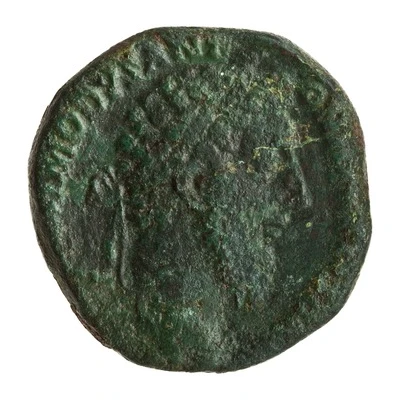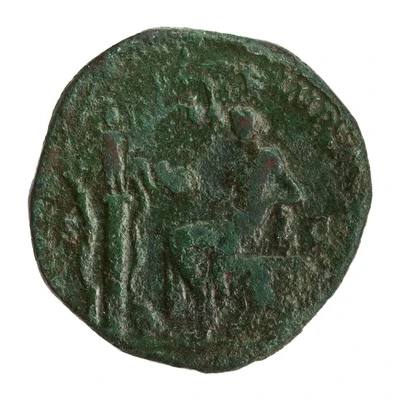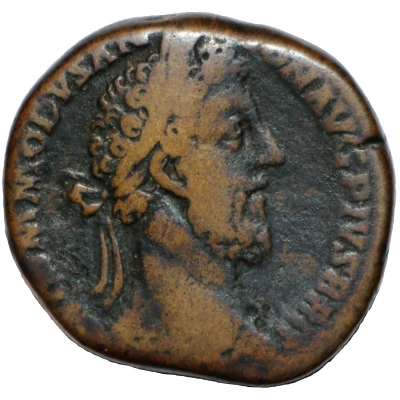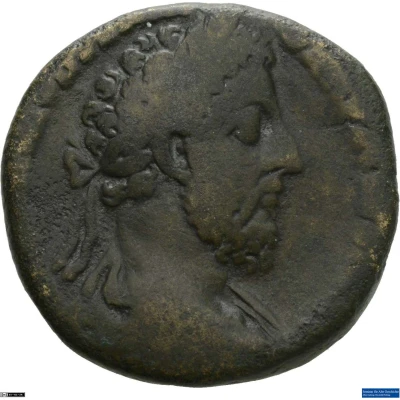
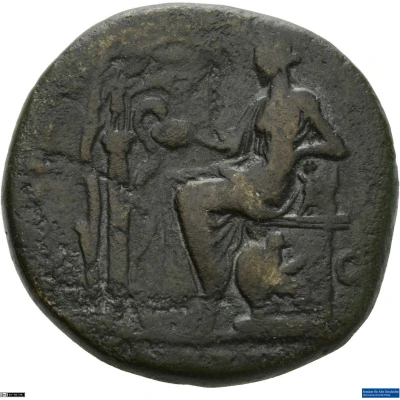

© Münzsammlung des Seminars für Alte Geschichte, Albert-Ludwigs-Universität Freiburg (CC BY-NC-SA 3.0 DE)
Sestertius - Commodus SALVS P M TR P VIIII IMP VII COS IIII P P S C; Salus, Spes, and Bacchus
184 year| Bronze | 19.9 g | 28 mm |
| Issuer | Rome › Roman Empire (27 BC - 395 AD) |
|---|---|
| Emperor | Commodus (Lucius Aurelius Commodus) (177-192) |
| Type | Standard circulation coin |
| Year | 184 |
| Value | 1 Sestertius = ¼ Denarius |
| Currency | Denarius, Reform of Augustus (27 BC – AD 215) |
| Composition | Bronze |
| Weight | 19.9 g |
| Diameter | 28 mm |
| Shape | Round (irregular) |
| Technique | Hammered |
| Demonetized | Yes |
| Updated | 2024-10-06 |
| Numista | N#265802 |
|---|---|
| Rarity index | 100% |
Reverse
Salus, draped, seated left on low seat on which are figures of Spes and sphinx, feeding out of patera in right hand, snake erect before column, which bears the figure of Bacchus (?) and at base of which is a cup; to left, tree.
Script: Latin
Lettering: SALVS P M TR P VIIII IMP VII COS IIII P P S C
Translation:
Salus. Pontifex Maximus, Tribunicia Potestate Nona, Imperator Septimum, Consul Quartum, Pater Patriae. Senatus Consultum.
Health. high priest, holder of tribunician power for the ninth time, supreme commander (Imperator) for the seventh time, consul for the fourth time, father of the nation. Decree of the senate.
Comment
Example of this type:Münzsammlung des Seminars für Alte Geschichte, Albert-Ludwigs-Universität Freiburg
Source:
Online Coins of the Roman Empire (OCRE)
Interesting fact
One interesting fact about this coin is that it features three gods on its reverse side: Salus, Spes, and Bacchus. Salus is the goddess of safety and well-being, Spes is the goddess of hope, and Bacchus is the god of wine and revelry. This combination of deities suggests that the coin was minted to promote the idea of a prosperous and joyful society under the rule of Emperor Commodus.
